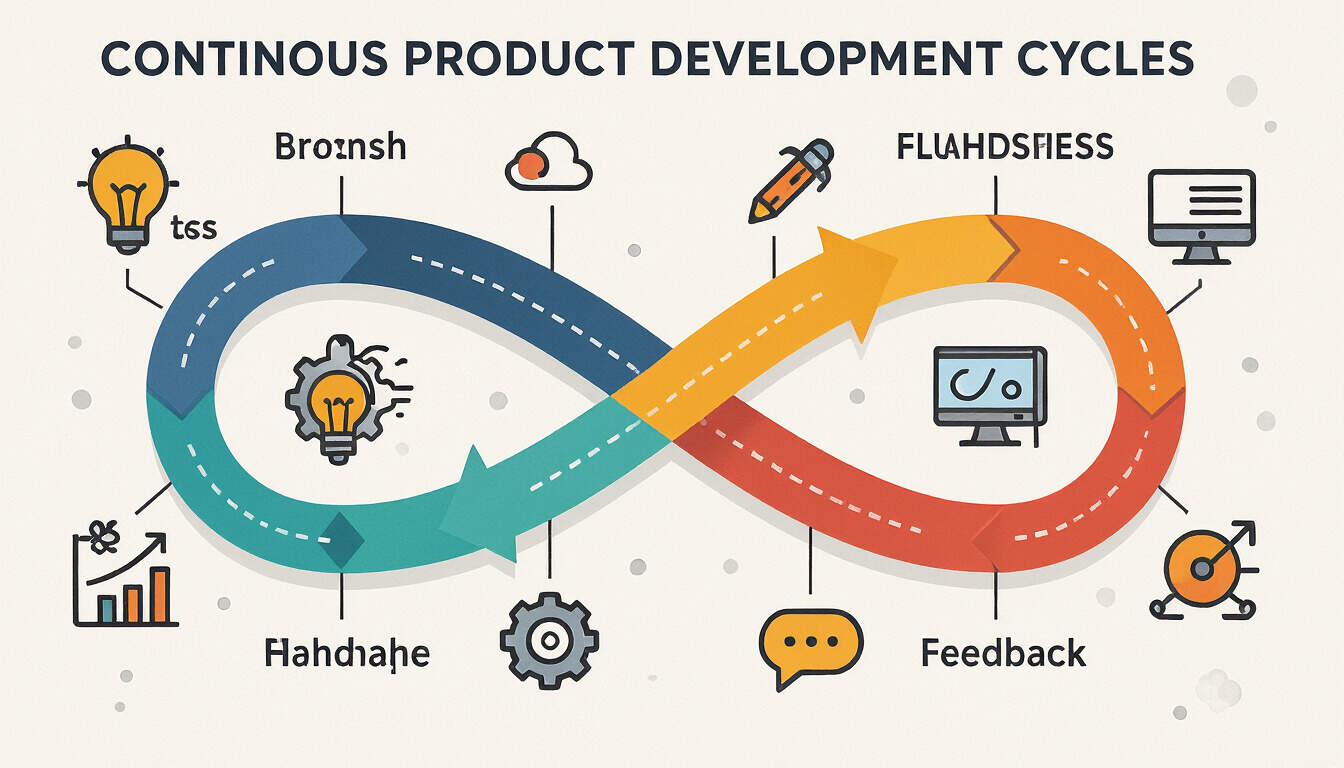Streamlining MVP Iteration Cycles with Zero-Code Tools
 by Shanie Goodwin
by Shanie Goodwin
Discover how zero-code tools can simplify MVP iteration cycles, allowing entrepreneurs and startups to validate ideas quickly and efficiently. Learn practical strategies to refine products based on real user feedback, saving time and resources.

Zero-code tools have transformed how teams approach MVP iteration cycles. These platforms enable users to build and test prototypes without writing code, making the process faster and more accessible.
The Basics of MVP Iteration Cycles
MVP stands for Minimum Viable Product, a core concept for testing ideas in early stages. In iteration cycles, teams create a basic version of their product, gather feedback, and make improvements. This method helps reduce risks and ensures the final product meets user needs.
For entrepreneurs, MVP iteration cycles offer a way to learn from real-world use before full development. By focusing on essential features, you can launch quickly and refine based on data.
Benefits of Zero-Code Tools in Iteration
Zero-code tools like Bubble or Adalo allow for rapid prototyping. These tools provide drag-and-drop interfaces that let you design and deploy MVPs in days rather than months.
Using such tools in your iteration cycles means you can experiment with different features without technical barriers. For instance, a startup might build an app prototype to test user engagement, then adjust based on responses.
One key advantage is cost savings. Without needing developers, teams can allocate resources elsewhere, speeding up the overall process.
Strategies for Effective Validation
When planning iteration cycles, start with clear goals. Define what success looks like for your MVP, such as user sign-ups or retention rates.
Gather feedback through surveys or beta testing. Analyze this input to identify patterns, then prioritize changes. For example, if users find a feature confusing, simplify it in the next cycle.
Incorporate A/B testing where possible. This involves creating variations of your MVP and comparing performance to guide decisions.
Step-by-Step Guide to Using Zero-Code Tools
To get started, select a zero-code tool that fits your project. Options include platforms for web apps or mobile interfaces.
- Plan your MVP: Outline the core features needed for validation.
- Build the prototype: Use the tool's interface to assemble your product.
- Launch and test: Release to a small group and collect data.
- Iterate based on feedback: Make updates and repeat the cycle.
This approach keeps the process iterative and responsive, helping you adapt quickly.
Real-World Examples
Many startups have succeeded with this method. A health tech company, for instance, used zero-code tools to create an MVP for a fitness app. After initial testing, they iterated on the user interface based on feedback, leading to higher adoption.
Another example is an e-commerce site that tested different layouts. By running multiple cycles, they optimized for better conversion rates without extensive coding.
Overcoming Common Challenges
Challenges in iteration cycles often include managing time or handling unexpected feedback. With zero-code tools, updates can be made swiftly, minimizing delays.
Ensure your team stays aligned by setting regular check-ins. Document changes to track progress and maintain focus.
Motivation for Entrepreneurs and Product Managers
Adopting zero-code tools for MVP iteration cycles empowers you to innovate with confidence. This practical path turns ideas into validated products, fostering growth and success.
By embracing these strategies, you can build resilience in your projects. Remember, each cycle brings you closer to a product that truly resonates with users.
In summary, zero-code tools make MVP iteration cycles an efficient way to validate ideas. With the right approach, entrepreneurs and product managers can achieve meaningful results and drive their ventures forward.
